Related Research Articles
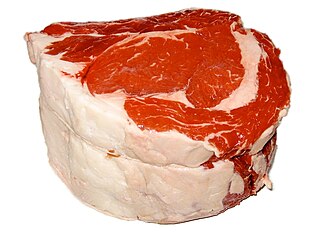
Beef is the culinary name for meat from cattle. Beef can be prepared in various ways; cuts are often used for steak, which can be cooked to varying degrees of doneness, while trimmings are often ground or minced, as found in most hamburgers. Beef contains protein, iron, and vitamin B12. Along with other kinds of red meat, high consumption is associated with an increased risk of colorectal cancer and coronary heart disease, especially when processed. Beef has a high environmental impact, being a primary driver of deforestation with the highest greenhouse gas emissions of any agricultural product.

The water buffalo, also called the domestic water buffalo or Asian water buffalo, is a large bovid originating in the Indian subcontinent and Southeast Asia. Today, it is also found in Italy, the Balkans, Australia, North America, South America and some African countries. Two extant types of water buffalo are recognized, based on morphological and behavioural criteria: the river buffalo of the Indian subcontinent and further west to the Balkans, Egypt and Italy and the swamp buffalo, found from Assam in the west through Southeast Asia to the Yangtze valley of China in the east.

Corned beef, or salt beef in some Commonwealth countries, is salt-cured brisket of beef. The term comes from the treatment of the meat with large-grained rock salt, also called "corns" of salt. Sometimes, sugar and spices are added to corned beef recipes. Corned beef is featured as an ingredient in many cuisines.
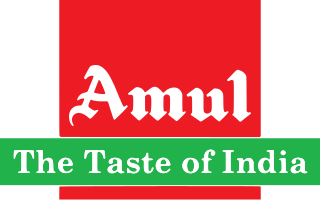
Amul is an acronym of the Indian cooperative society named Gujarat Milk Marketing Federation based in Anand, Gujarat. It is under the ownership of Gujarat Cooperative Milk Marketing Federation Limited, Department of Cooperation, Government of Gujarat. It is controlled by 3.6 million milk producers.

Horse meat forms a significant part of the culinary traditions of many countries, particularly in Eurasia. The eight countries that consume the most horse meat consume about 4.3 million horses a year. For the majority of humanity's early existence, wild horses were hunted as a source of protein.
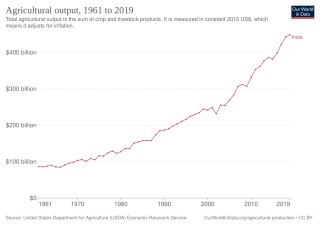
The history of agriculture in India dates back to the Neolithic period. India ranks second worldwide in farm outputs. As per the Indian economic survey 2020 -21, agriculture employed more than 50% of the Indian workforce and contributed 20.2% to the country's GDP.
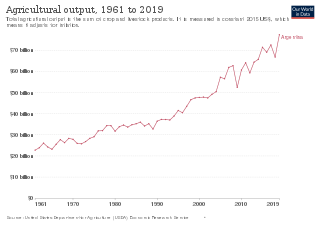
Agriculture is one of the bases of Argentina's economy.
The Beef Hormone Dispute is one of the most intractable agricultural controversies since the establishment of the World Trade Organization (WTO).

Many farmers in India depend on animal husbandry for their livelihood. In addition to supplying milk, meat, eggs, wool, their castings (dung) and hides, animals, mainly bullocks, are the major source of power for both farmers and dairies. Thus, animal husbandry plays an important role in the rural economy. The gross value of output from this sector was 8,123 billion Rupees in FY 2015–16.

Fishing in India is a major sector within the economy of India contributing 1.07% of its total GDP. The fishing sector in India supports the livelihood of over 28 million people in the country, especially within the marginalized and vulnerable communities. India is the third largest fish producing country in the world accounting for 7.96% of the global production and second largest producer of fish through aquaculture, after China. The total fish production during the FY 2020-21 is estimated at 14.73 million metric tonnes. According to the National Fisheries Development Board the Fisheries Industry generates an export earnings of Rs 334.41 billion. Centrally sponsored schemes will increase exports by Rs 1 lakh crore in FY25. 65,000 fishermen have been trained under these schemes from 2017 to 2020. Freshwater fishing consists of 55% of total fish production.
The information technology industry in India comprises information technology services and business process outsourcing. The share of the IT-BPM sector in the GDP of India is 7.4% in FY 2022. The IT and BPM industries' revenue is estimated at US$ 245 billion in FY 2023. The domestic revenue of the IT industry is estimated at $51 billion, and export revenue is estimated at $194 billion in FY 2023. The IT–BPM sector overall employs 5.4 million people as of March 2023. In December 2022, Union Minister of State for Electronics and IT Rajeev Chandrasekhar, in a written reply to a question in Rajya Sabha informed that IT units registered with state-run Software Technology Parks of India (STPI) and Special Economic Zones have exported software worth Rs 11.59 lakh crore in 2021-22.

In New Zealand, agriculture is the largest sector of the tradable economy. The country exported NZ$46.4 billion worth of agricultural products in the 12 months to June 2019, 79.6% of the country's total exported goods. The agriculture, forestry and fisheries sector directly contributed $12.653 billion of the national GDP in the 12 months to September 2020, and employed 143,000 people, 5.9% of New Zealand's workforce, as of the 2018 census.

The economy of Odisha is one of the fastest growing economies in India. According to 2014-15 economic survey, Odisha's gross state domestic product (GSDP) was expected to grow at 8.78%. Odisha has an agriculture-based economy which is in transition towards an industry and service-based economy.
Meat Products of India Ltd (MPI) is a major Indian meat processing, packaging, and distribution company based in Edayar, Koothattukulam in the district of Ernakulam, Kerala.

Pink slime is a meat by-product used as a food additive to ground beef and beef-based processed meats, as a filler, or to reduce the overall fat content of ground beef. As part of the production process, heat and centrifuges remove the fat from the meat in beef trimmings. The resulting paste, without the fat, is exposed to ammonia gas or citric acid to kill bacteria. In 2001, the United States Department of Agriculture (USDA) approved the product for limited human consumption. The product, when prepared using ammonia gas, is banned for human consumption in the European Union and Canada.
Laurence "Larry" Goodman is an Irish businessman, chiefly involved in the beef processing industry. He is the 6th generation of a livestock and meat exporting family and founded what is now ABP Food Group in 1954. He is the Executive Chairman of the company which has grown to become one of Europe’s largest agri-business companies with 51 processing plants in Ireland, the United Kingdom, Spain, France, Denmark, Holland, Austria, Poland. ABP employs over 11,000 people. Separately, the Goodman family office has business interests in property, healthcare and productive arable and beef farming.

Cattle slaughter in India, especially cow slaughter, is controversial because of cattle's status as endeared and respected living beings to adherents of Dharmic religions like Hinduism, Jainism, Buddhism and Sikhism; while being an acceptable source of meat for Muslims, Christians and Jews. Cow slaughter has been shunned for a number of reasons, specifically because of the cow's association with the god Krishna in Hinduism, and because cattle have been an integral part of rural livelihoods as an economic necessity. Cattle slaughter has also been opposed by various Indian religions because of the ethical principle of Ahimsa (non-violence) and the belief in the unity of all life. Legislation against cattle slaughter is in place throughout most states and territories of India.
The New Zealand Meat Board is a statutory body which provides quota management on behalf of the Crown for meat exports to the United States, European Union and United Kingdom. To protect their own livestock industry these countries give limited access to New Zealand meat exports.

Nashik grape is a variety of grape produced in Nashik district, which is known as the "grape capital of India". Nashik contributes to more than half of the total grape export from the country.
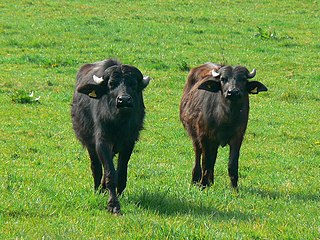
Buffalo meat is the meat of the water buffalo, a large bovid, raised for its milk and meat in many countries including India, Nepal, Pakistan, Bangladesh, Philippines, Bulgaria, Italy, Russia, Czech Republic, Slovakia, Australia and Egypt.
References
- ↑ "What Pink Revolution?", The Hindu Business Line , 6 April 2014
- ↑ "Beef exports up 44% in 4 years, India is top seller - Times of India". The Times of India. April 2013. Retrieved 28 February 2019.